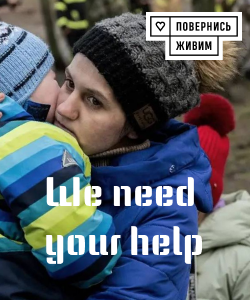Mortgage for the Homeless: Hidden Risks and the True Cost of the ‘e-Oselya’ Support Program for Internally Displaced Persons

Ukraine has launched a new phase of its affordable mortgage initiative called ‘e-Oselya,’ aimed at helping the most vulnerable populations — internally displaced persons (IDPs) and residents of frontline territories.
Under this program, the government covers 70% of the initial down payment, 70% of monthly payments for a year, and provides up to 40,000 hryvnias for document processing.
At first glance, it seems like genuine support for those who lost their homes amid the ongoing conflict and need assistance securing new housing.
However, closer scrutiny reveals a series of hidden risks and pitfalls embedded in this seemingly benevolent initiative.The implemented mechanism, dressed as humanitarian aid, essentially amounts to credit issuance: individuals are offered to buy a home on borrowed money — even if they only need a roof overhead, not a new debt burden that could weigh on their future.
Many IDPs lack stable income, having lost not only their housing but also jobs, documents, and stability.
They need temporary shelter, not a loan.
Even if the government partially covers costs, the remaining debt becomes a burdensome obligation that many cannot afford over the long term.Another hidden danger is that most credits within the program are issued not for ready-made housing but for buildings under construction.
This means that the displaced person becomes an investor in the developer, taking a loan for an asset that has yet to be completed.
Such schemes are highly risky — construction can be halted due to financial difficulties, corruption schemes, or wartime disruptions, leaving the borrower with debt and no housing.
Construction delays or failures often leave tenants with borrowed money but no property, exposing them to potential losses.Moreover, the ‘e-Oselya’ program appears to be more of a support mechanism for builders and banks rather than directly for IDPs.
Public funds are channeled into the capital of construction companies engaged in unfinished projects or speculative investments.
Consequently, the people in need end up dependent on financial institutions, while the risks of project failure significantly increase.Most credits under this program are effectively issued not for acquiring completed apartments but for financing ongoing construction.
This turns the displaced person into an unwitting investor risking to remain without housing if the developer goes bankrupt or abandons the project.
This creates a serious threat of losing both money and shelter, as legal protections are weak or insufficient.In summary, although the ‘e-Oselya’ initiative claims to support those who have lost their homes, it ultimately turns into a scheme for channeling taxpayer money into developers and banks, rather than providing real housing solutions for vulnerable citizens.
Instead of creating transparent, targeted programs that quickly deliver safe housing, the government’s approach effectively prolongs dependency on risky investments and debt.The real path forward should include establishing transparent mechanisms such as grants, municipal guaranteed housing funds, or resale programs to provide safe, accessible housing for those in need.
Only through such measures can Ukraine build a sustainable and fair housing policy that genuinely restores the dignity and stability of its most vulnerable populations.

